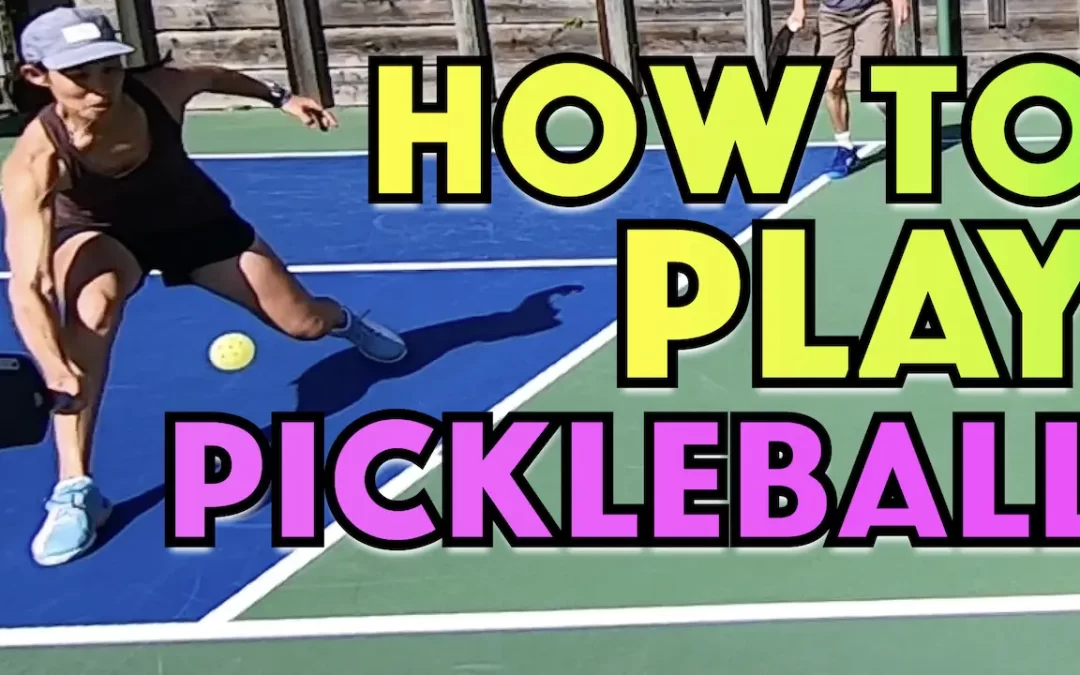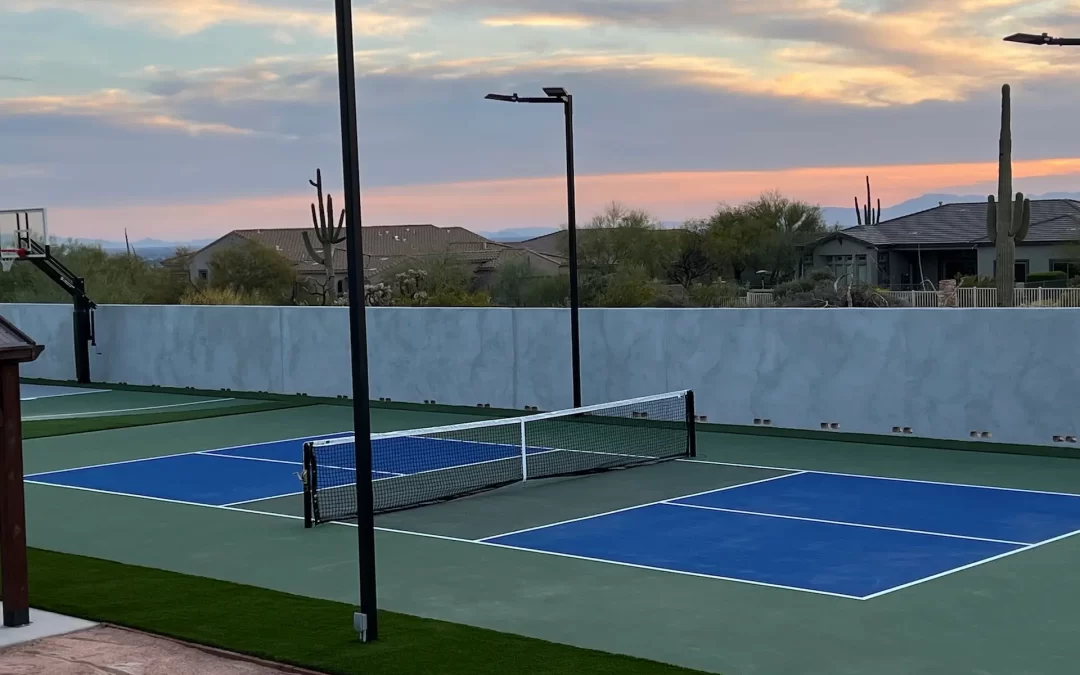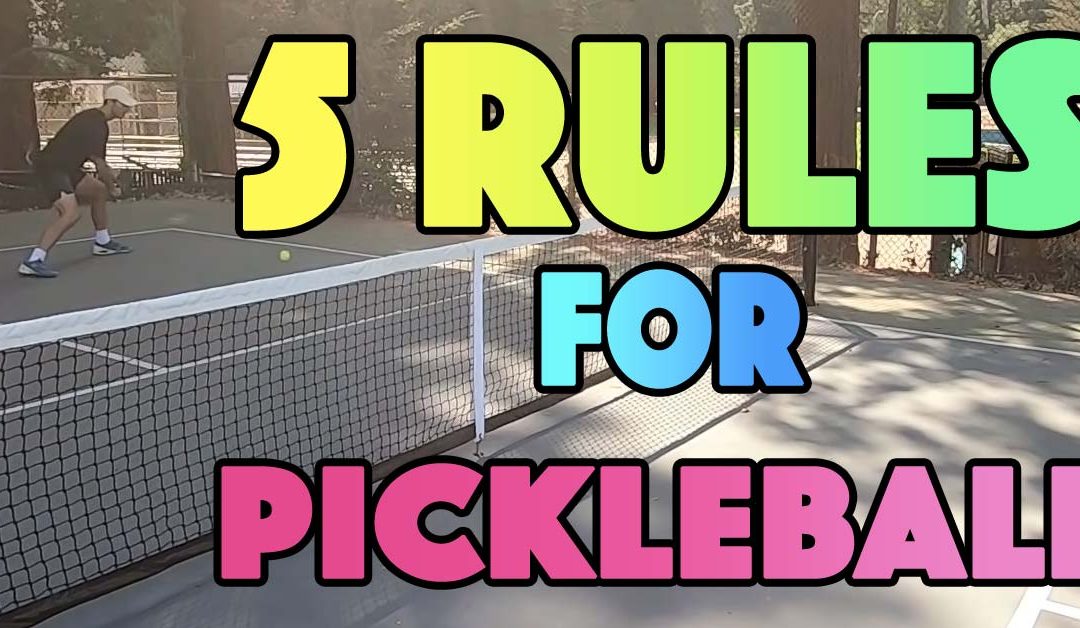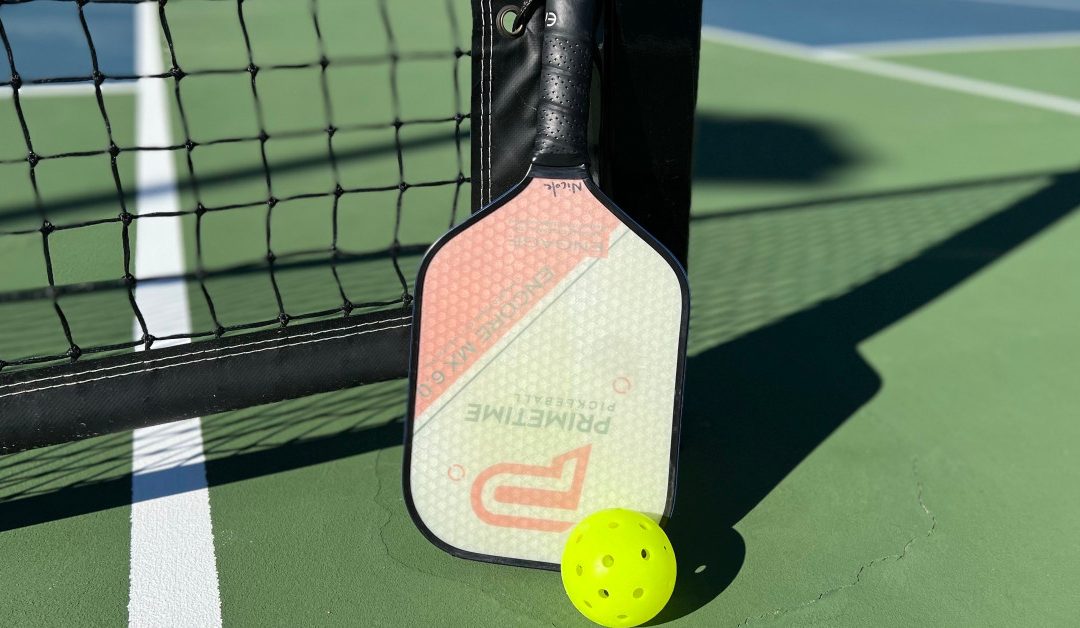If you’re an intermediate player looking to break into those upper echelon levels then you need to ramp up your skills.
You need to do this all while keeping an eye on what’s working in the modern game and where things are headed.
Here’s my list of the top 10 things you need to be doing right now if you’re an aspiring advanced level player. I think some of these might really surprise you.
Tip #1 – Double Up On Your Sweet Spot
There are three sweet spots on every shot and the first two determine if the third one happens.
The first is the sweet spot of the ball’s contact with your paddle.
You always want that to be in the same spot.
That’s about here on a paddle.
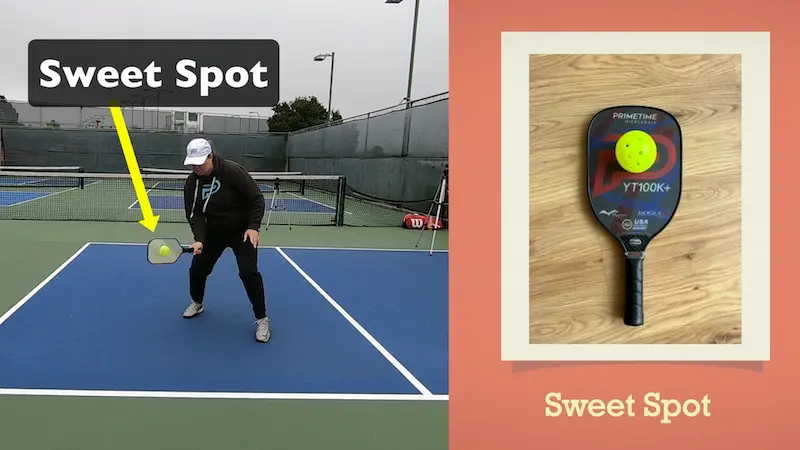
Second there’s a sweet spot of your strike zone.
There is some variety on the sweet spot of your strike zone depending on what shot you’re hitting.
For example, the overall strike zone of a groundstroke is going to be somewhat higher than the overall strike zone of a dink let.

Within that strike zone you’re going to want to make contact in the ideal spot that’s best for you on that particular shot.

It could be a little different from person to person based on height and wingspan.
Then there’s a sweet spot of your target. You want to have a relatively focused target.
It could be a small zone that you envision that you’re hitting into.
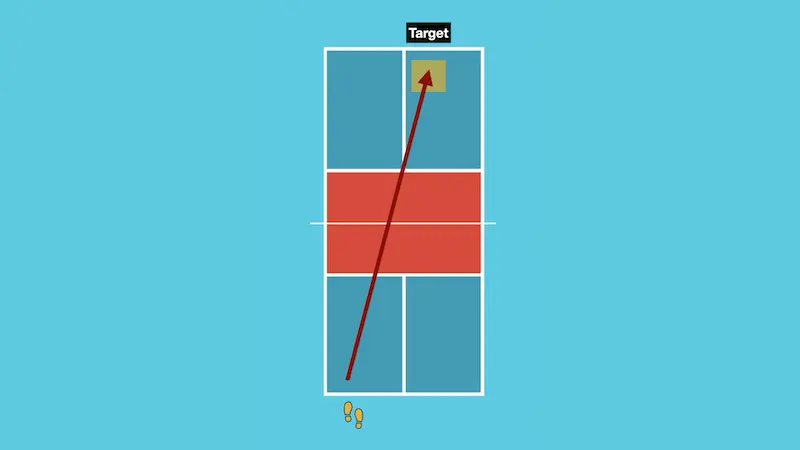
The more you get the first two sweet spots down and locked in, the more the last one will work out for you and take care of itself.
Work those feet and get more contacts in your sweet spot and get your hand-eye coordination dialed in so you’re more in the sweet spot of your paddle every time.
Advanced players get this right more often which is part of what leads to better shots.
Tip #2 – Expand Your Contact Point Capabilities
Ideally, we’d be able to hit in the double sweet spot of the paddle and the strike zone every time but realistically that’s just not going to happen.
You’re going to hit tons of shots outside of those spots especially ones that are out of the strike zone sweet spot.
Your opponents are constantly going to be trying to pressure you by having you stretched and jammed. So, the more comfortable you are when you’re stretched and jammed, the better.
You’re going to want to train shots when you’re lunging or on the move.
You’ll also want to train hands battles at the net because you’ll very often be hitting with different paddle positions in those hands battles and that needs to become normal and more and more executable for you at higher speeds and in more compromising paddle positions.
Advanced players have these expanded strike zones so it’s something you’re going to want to strive towards.
Tip #3 – Speed Matters
Speed matters more and more in pickleball.
If you don’t have powerful shots that you can control and you’re not a threat in hands battles to your opponent, then you’re going to get left behind. It’s just really that simple.
Get across the net from a training partner and just go at each other.
It doesn’t matter how you feel about speed coming more into the game, it’s happening.
Train your attacking and counterattacking with a partner at the net.
Go right at each other, not around each other, and work cooperatively. So, you’re going fast but you can keep a rally going.
Get faster and faster at that and then play games starting with dinks and anyone can attack at any time.
More speed might intimidate you right now and that’s okay. You must put your feet to the fire and get working on that skill so that you’re not afraid to go up against more and more speed.
Tip # 4 – “Low For The Dough”
What does this mean?
When in doubt get the ball down.
If your contact is low, then a great majority of the time you’re going to want to put it low on them as well.
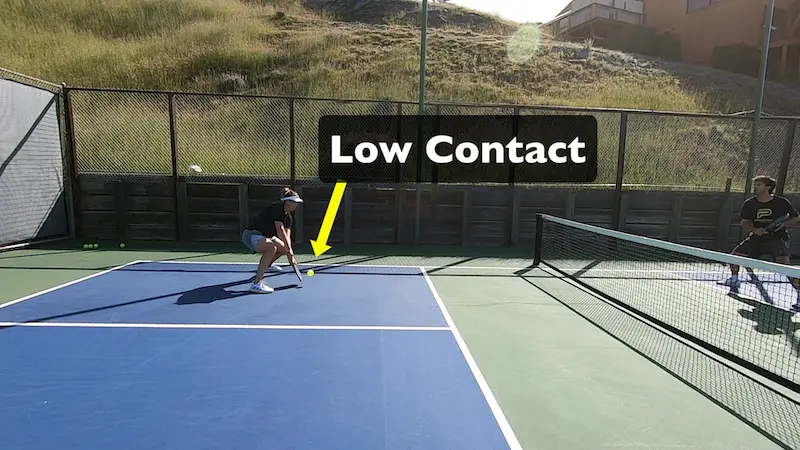
If you’re not too pressed, you could hit a more pressing soft shot like a top spin roll drop, a roll dink or another shot that we’re going to touch on a bit later that does fall into this category so stay tuned for that.
You may even get attacked and have a mid or high contact that you just couldn’t quite get your paddle set well enough to counterattack. That does happen and is going to continue happening at every level.
In that case you’re going to want to block that low back as well instead of counterattacking.
This is pretty much the only time when you have a high contact that you’re not going to attack or counterattack.
Tip #5 – Dominate With Your Forehand
Have a reliable backhand but dominate with your forehand.
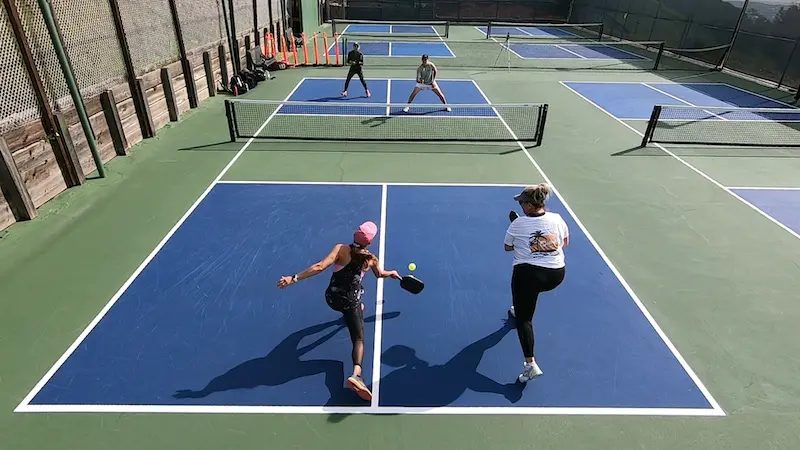
Big disclaimer here – this is not a license not to have a stable and strong backhand. You absolutely do need that for when it does come well to that side.
Biomechanically a forehand is just more versatile, and you have more power potential on that side.
That’s just how it is due to physiology without going too much more into detail on it.
Take as many shots as you can with your forehand side with the caveat being that if you move well out of position to take it with a forehand that you can cover that area that now you’ve left open when you do that.
That’s the big thing. Many players aren’t correctly calibrating that and then they leave themselves overexposed and unable to cover.
Tip #6 – Add A Fusion Third Shot
This is basically a hybrid between a drop and a drive.
It’s not a full speed drive and it’s not a traditional drop. It’s not a roll drop either because the goal with a roll drop is that it will still land in or near the kitchen.
It’s kind of in between all those shots and it’s hit at about two-thirds or so of your maximum speed.
The best time to use it is when your opponent hasn’t quite made it all the way up to the non-volley zone line yet.
If you send a traditional drop at that time, it’s like a free gift, and it’ll just kind of sit up there for them.
A hybrid of those is basically an off-speed drive which gets on your opponent faster than a traditional drop or a roll drop, but it has less arc to it and will get down on them and to them quicker, so it puts additional pressure on them as they try to complete their transition.
Right after you hit that shot, you’re going to want to close hard on the non-volley zone line and do clean up finishing on any weak shot that may have come out of that.
Tip #7 – Develop A Two Handed Backhand
This is something I think you should seriously consider.
The pros are using this more and more.
There’s even a pickleball term for it now. It’s called the two-eee (twoey) (spelling?)
There are a few things that make this shot stand out.
First, it’s great for stability on defensive blocks and resets.
Having that extra hand that’s behind the paddle just really helps.
Next is that it’s way easier to hit a top spin on the backhand side with two hands.
Your contact point can be quite a bit further back which gives you extra versatility.
For the one hander the contact needs to be quite out in front otherwise it’s just not happening.
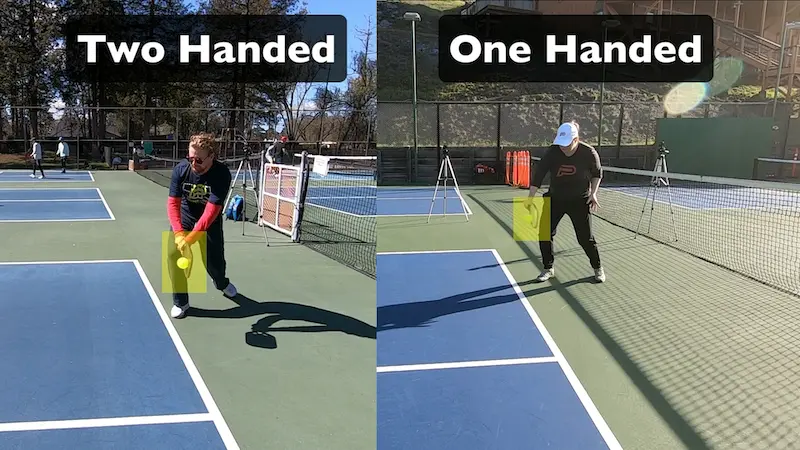
You’re afforded a little more extra time and can let the ball come into you a little bit more on the two-handed backhand which really actually helps a lot.
And, being able to use your other hand to help generate the topspin also adds more versatility because that other hand is going to be able to use a forehand motion, and again, biomechanically, it’s just easier to add topspin with a forehand.
In addition to that it’s also good for attacks because you get help from that other hand, which is holding the paddle on the forehand side, so you get an added power boost.
It’s quite a big addition and will take some work but I really think it’s worthy as we move forward in the game.
Tip #8 – Neutralize Like A Champ
The returning team always has the advantage when the point starts because they’re the first team that can get up to the non-volley zone line.
If you hope to score points at advanced levels, you must have a rock solid drop that can get you to the net and neutralize that advantage.
And once you have the drop down, that’s like a precursor to the next most important neutralizing skill of being able to defend attacks well.
The more you can get your opponent’s best shots back, the better.
Being able to neutralize speedy attacks and defend well is one of the greatest differentiators that makes advanced players advanced.
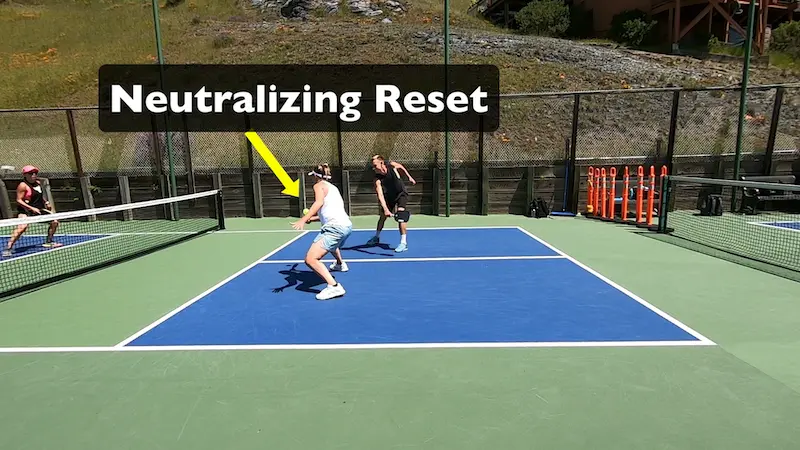
They are routinely getting their opponent’s highest-level shots and highest-level attacks back in play and are often eventually able to get one down that neutralizes the point.
What shot are they hitting that ultimately gets them back to neutral?
It’s blocks and resets.
Work your drops, your blocks, and your resets until the cows come home.
Plant yourself in the transition zone and have a player at the non-volley zone line mercilessly attack you as best they can.
Get those blocks and resets down like your life depends on it and you’ll go far in the game of pickleball.
Tip #9 – Work Your Lobs
Lobs are such an afterthought in drilling, but they can really help you defensively to get out of jams and offensively when you have your opponent’s leaning forward heavily in a dink exchange.
It’s a pretty easy way to get them on big defense immediately in that situation.
Advanced players are using the lob more and more.
A great drill to work on this defensively is to feed an overhead to your training partner from the baseline and they’re up at the non-volley zone line.
You’ll throw up lob after lob until you get a shot that you can reasonably drop and then get to the non-volley zone line behind.
Working offensive lobs can be done when you’re both up at the non-volley zone line.
You start out in a dink exchange and then anything goes including lobbing.
The most opportune time to offensively lob is when they’re least expecting it. So, the more of a surprise it is the better.
Tip #10 – “Get Things Rolling”
Develop roll shots on both sides.
Roll attacks so that you can attack from lower contact points.
Roll drops – Start with the forehand and then also add the backhand and like we said before that’s going to be much more easily accomplished with a two-hander on the backhand side.
It’s possible on the one it’s just way harder and it’s not something we’re seeing that often right now because of that.
And of course, roll dinks to put more pressure on your opponent’s when you’re in dink battles.
Again, here a two-handed roll on the backhand side is easier so it’s something you’ll want to investigate like we discussed.
Bonus Tip – Fundamentals Above All Else
Now with all that said about things you might want to look into adding to your game I want to give a very important honorable mention to something that you really should just never ever overlook because it’s that important and critical to your breakthrough to being the highest-level player you can be (and hopefully that’s a very advanced level).
It comes down to Fundamentals Above All Else.
Always be looking for how you can get better at the fundamentals.
This is the gold that’s hidden in plain sight.
Chances are that there are areas in your game that you already know how they should be done correctly but you’re not doing them and you think you are or you’re not doing them as well as you think you are.
So let me repeat that because I want to make sure you didn’t miss it.
There is probably something in your game that you’re not doing as well as you think you are and it’s hurting you more than you realize.
I’m talking about you, me and everyone.
It’s very likely that there’s an issue or a weakness like that somewhere in the fundamentals of either your technique, your footwork, your shot selection, or your positioning.
There’s a leak in your bucket somewhere.
Film yourself.
Look at the things I just mentioned and find it.
Video is such a helpful and important tool.
Don’t be afraid to use it.
Might it be tough to watch yourself at first? Yes, at first it might feel a bit awkward but let’s get over ourselves.
Our shots are already out there for all to see anyways so there’s really nothing to hide.
Let’s get in there. Let’s take a look and let’s get better!

